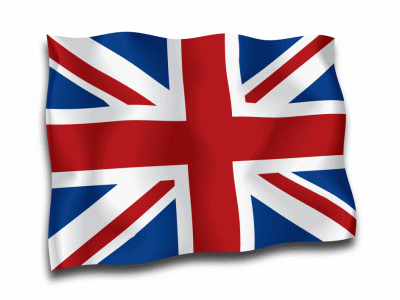Малюкова Гульжихан Шамуратовна , ағылшын тілі пәні мұғалімі
БҚО, Орал қаласы, №20 орта жалпы білім беретін мектеп
The theme of the lesson: “Active and Passive voices.”
Form: 9th
Aims of the lesson:
Educational: the formation of skills in monologue and dialogue, to enrich students’ vocabulary on the given theme, to practice using passive voice;
Developing: to develop pupils’ abilities in speaking through pair work, communicative competence, to develop their creative abilities through different kinds of activities.
Bringing – up: to teach pupils to value life, to live healthy;
The type of the lesson: grammar lesson
Methods: question – answer, group work.
Visual aids: an interactive board, cards.
The procedure of the lesson:
- Organization moment.
Greeting
— Good afternoon, dear children!
— How are you?
Classroom expressions
- Who is on duty today?
- Who is absent today?
- What is the date today?
- What day is it today?
- What was your home task?
- Thank you. Sit down.
- Preparation
T: Dear pupils! Today we are going to say about disasters in Kazakhstan.
- Vocabulary. Look at the book on p.54. Read and translate!
| landslide & slope collapse |
| storm |
| epidemics |
| forest fires |
| Disasters in Kazakhstan |
| a hurricane |
| a volcano |
| tsunami |
| a neuclear bomb |
| an earthquake |
Pay attention to the dates!
Flood (February 2008)
South Kazakhstan were flooded as a result of heavy rains and a sudden increase in air temperature. In total 2,383 houses were inundated; 298 houses were destroyed, one person died and more than 13,000 people were displaced.
Earthquake (May 2003)
An earthquake measuring 6.5-7 on the Richter scale hit the Zhambyl . 36,626 people were affected, and houses and social infrastructure were heavily collapsed.
Flood (May 1993)
The flood caused much damage to local infrastructure, ten lives were lost and some 30,000 people were left homeless. 5,500 houses were damaged.
Explain the grammar.
A passive verb is a form of be + a passive participle. Example: is bought, are cleaned, were written.
| Active voice | Passive voice |
| We do exercises | The exercises are done by us. |
| We are doing exercises. | The exercises are being done by us. |
| We have done exercises. | The exercises have been done. |
| We did exercises yesterday. | The exercises were done yesterday. |
In active sentences, the subject of the verb is the person or thing doing the action:
Example: George found the wallet.
In passive sentences, the action is done to the subject. So the subject is somebody or something to which something happens:
Example: The child was rescued by the police.
Note:
We often don’t use by+ the subject of first sentence if:
We don’t know who did/does it:
Example: Active: Someone has stolen my watch.
Passive: My watch has been stolen.
It’s obvious who did/does it:
Example: Active: The police arrested her last week.
Passive: She was arrested last week.
It’s not important who did/does it:
who did/does it:
Example: Active: They are going to knock down the building.
Passive: The building’s going to be knocked down.
We usually use with when we talk about the things we use to do the action (such as tools and equipment).
Example: The wall was painted with a special paint.
When we talk about materials we usually use of.
Example: That table is made of wood.
We use be + a passive participle after will, going to, can, must.
e.g. The exercises will be done tomorrow.
The exercises are going to be done.
The exercises can be done orally.
The exercises must be done in time.
Practice your grammar: Put the verbs in brackets into the passive (work with cards). Do on the blackboard!
Card 1
Every spring, before the summer season starts, our local beach (1) _is cleaned(clean) by volunteers.
Card 2
All the rubbish (2) is picked up (pick up) and (3) put (put ) into big bags.
Card 3
Later, it (4)_is separated (separate) into things that can (5) be recycled (recycle), like glass and paper, and things that have to (6) _be thrown (throw) away.
Card 4
Last year, ten large bin bags (7) were taken (take) to the local recycling centre. I always help with the cleaning.
Card 5
The beach (8) is made (make) safer and cleaner for all of us and it’s good for the environment if some of the rubbish (9) _is recycled (recycle) too.
Reading. Read the text about water disaster and complete the box with verbs in Active and Passive forms .
Most of the earth’s surface is covered with water. Water is a very powerful force of nature. Water must be contained in some way. The banks of rivers and lakes and beaches stop the water from spreading all over the land. Sometimes there is too much water. The banks may not be high enough to keep the water where it belongs. When water overflows its banks and flows over dry land it is called a flood.
A sudden thunderstorm or heavy rainfall can cause a flood. Sometimes the cause of flooding is a long way away. When water is needed for irrigation, a concrete wall called a dam is built across a river. The dam stops the water in the river from flowing. Water is collected and stored in reservoirs for later use. Sometimes the stored water is used for making electricity. Dams are a way of controlling rivers and preventing floods. However, a dam can burst and cause flooding without warning. When this happens people are surprised by the raging water that destroys everything in its path.
Most flooding is caused by nature. Floods happen when there is too much water in one place. When it cannot escape, it spreads out and flows downhill. There are many different kinds of floods. There are slow kinds that are often caused by long periods of rain. In some places these long periods of rain are called monsoons. A flood that happens very quickly is called a flash flood. It can happen as a result of too much rainfall or warm temperatures melting snow in the mountains too quickly. The outside of the Earth is called the crust. Just like the crust on a loaf of bread, the Earth’s crust has cracks in it. The cracks are called faults. The crust of the Earth isn’t solid at all. It is made up of many pieces called plates. The plates of the Earth’s crust fit together like a giant puzzle. But unlike a puzzle, the plates of the Earth’s crust are always moving. The Earth’s plates float on a layer of hot, melted rock. This part of Earth is called the mantle.
| Active | Passive |
| 1. is | 1. is covered with |
| 2. stop | 2. must be contained |
| 3. overflows | 3. |
| 4. flows | 4. |
| 5. | 5. |
| 6. | 6. |
| 7. | 7. |
Production. Do the task on p 121 Ex.1
Reflection:
got acquainted ——————————————
found out —————————————————
During today’s lesson I have learnt ——————————————————
remembered ———————————————-
said my own opinion on ————————————
Evaluation. Home task. Ex 2 a p. 42 on WB
Literature:
Herbert Puchta and Jeff Stranks, Cambridge University Press 2013
(Active book and work book)
Internet recourse: some information and reading materials
[bws_related_posts] sabaq.kz sabaq.kz
sabaq.kz sabaq.kz

